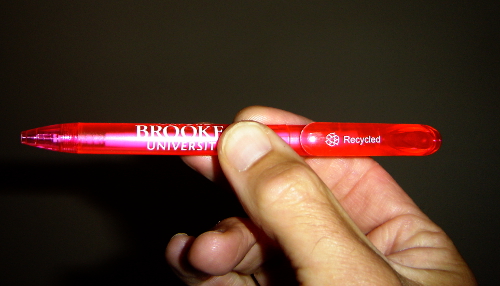There are several discussions on the Web about improving visual imagination and memory. I wrote about one of them in an earlier posting, "From 'I cannot mentally visualise' to 'god what a taste of fire'". The second part of that title comes from a comment by user "fritillary" who, explaining how she had revolutionised her own visualisation abilities, remarked:
It was months before I saw any results, but god what a taste of fire.Another discussion that I've just found on lesswrong.com suggests a way to do this — namely, using afterimages. Actually, it's concerned with auditory "afterimages", but would it also work for visual memory?
The discussion is in a thread called "generalizing From One Example". (In case the site should disappear, I've archived this in the Wayback Machine.) The title refers to the "Typical Mind Fallacy", the belief that one's own mind is similar to everyone else's. According to user Yvain who started the thread, Francis Galton carried out a study on mental imagery, presumably the one written up in "Statistics of Mental Imagery", Mind, 5 (1880). Galton gave people detailed questionnaires about how well they could visualise. Some subjects couldn't form mental images at all, others had almost perfect imagery. But the ones who did assumed everyone did, and the ones who didn't assumed no-one did, to the point of supposing that anybody claiming they could image was lying. Thus Galton experienced the Typical Mind Fallacy. Most of the rest of the thread concerns applications of the Fallacy, including visualisation. The contributions that interest me today are by user "cousin_it", in this comment and this (archived here and here).
In the first comment, cousin_it wrote:
Regarding differences in mental imagery: only this winter did I really understand that good musicians have vivid aural imagination, while I couldn't hear any sounds in my head, period. Immediately after this realization I started exercising. By now I can hear complete monophonic melodies, and (on good days) imagine two notes sounding at the same time. Classically trained conductors can imagine a complete orchestral sound while reading sheet music. I don't see any reason why visual imagination can't be similarly trained.Another user then asked how cousin_it practised this skill. Here's the reply:
The hardest part for me was the beginning, getting a toehold at any inner sound. Pick a note on the guitar - I started with D on the second string. Play it at a steady rhythm with rests, slowly fading away into nothing. (Might not be possible on the piano or other instruments.) At some moment the brain will start to "complete" the sound, even though by that point you're playing too softly to hear. Catch that feeling, expand on it. When you can "do" several different notes, try playing a simple melody and hearing it afterwards. After you're comfortable with that, try to hear a simple major scale without playing it immediately beforehand. Then work from unfamiliar sheet music without playing it - solfege-sing in your mind - by now I can do this quite easily. And so on.
One thing to investigate, I think, should be what happens in the brains of people who have learned to "complete". Does some part of the brain's state when hearing the sound persist once that sound is gone? Is there some kind of feedback that is keeping this going? Does the brain state of completers differ from that of people who have not learned to complete?
As far as applying the idea to vision goes, we need an analogue to fading notes. The obvious thing to try is fading simple shapes — perhaps lines or circles — on a computer screen. It would be a fairly simple research project to write suitable software and try it out on a range of subjects.
Not having such software, I looked around for an object I could try "fading". The pen pictured below (*) seemed a good choice:

It's in a translucent violently-magenta case, vivid enough to grab the attention, especially if direct light is shining through. It's actually quite a lot brighter than in the photo, as if softly glowing. I tried holding it horizontal in the middle of my visual field, then snatching it rapidly away along its own length while concentrating on retaining the image, doing this twenty times. I seemed to be able to maintain an afterimage for a short time, provided that I viewed the pen against a white background with no distractions, namely my ceiling. Is this worth practising? Of course, one has to beware of the
N-ray effect.
By the way, I came across one advocate of afterimages for visualisation. It's Marko Martelli on his self-help site unchainmybrain.com . In his "How to Develop the Ability to Visualize Mental Imagery – From Scratch" (archived here), Marko suggests looking at a candle flame for ten to twenty seconds, then closing your eyes and trying to keep the afterimage for as long as possible. Describe the flame's colour, shape and other properties to yourself in words as fully as possible. Then open your eyes and repeat the exercise, for no more than five minutes. Practise regularly, Marko says, and you will see progress. Marko says that he developed this method after long practice, frustrated at not being able to visualise.
(*) Coincidentally, the pen was given to me at a discussion with Brookes University about applying sports science to drawing. But that's another topic.
No comments:
Post a Comment